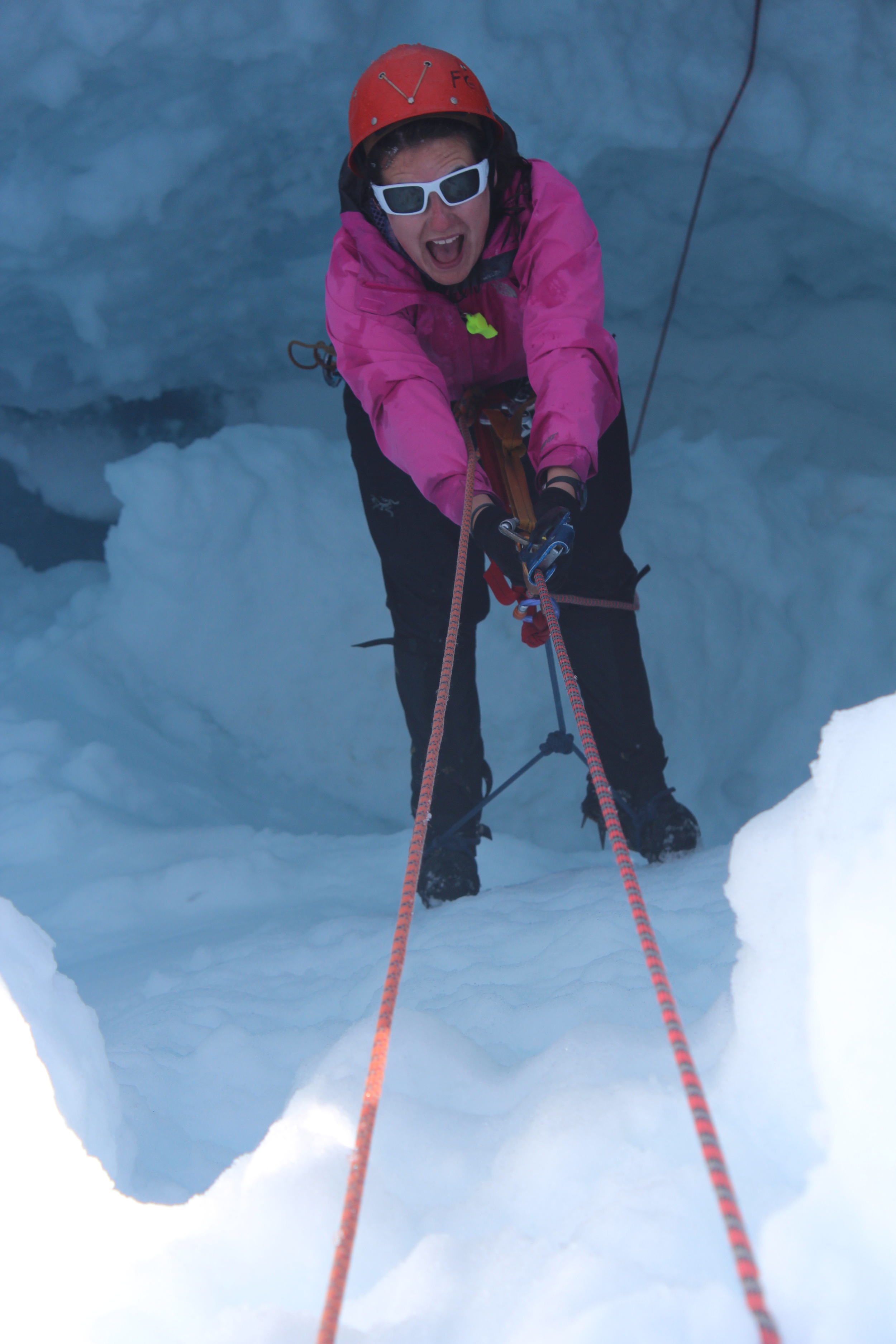by Hannah Rosenkrans, University of Montana
A bluebird day opened up the Vaughn Lewis Glacier, revealing crevasses, snow bridges, and bergschrunds previously hidden by the clouds and rain. The location was perfect for the goal of the day: learn how to rappel. We roped up to approach the crevasses and stopped in the wanded-off safe area, where we dug strong anchors in the dense, wet snow.
Mary and Danielle make sure their harnesses are in order.
Hannah is pumped to go rappelling.
As you first back down into a crevasse, a symphony of wet, dripping sounds engulfs your ears. Nervous hands guiding the rope through the rappel device quickly find a rhythm as excitement and awe take over, crampons sticking fast into the wall.
Luc makes rappelling look easy.
Rappelling into a crevasse feels like going back in time. The compacted snow at the surface gives way to the layers of ice that have hidden from the sun. The thin crack at the surface conceals the overhanging lip and chasm below. Smooth walls line this icy world, exposing the processes of compaction and metamorphism that affect snow beneath the surface. The sunlight only makes it halfway down the walls, leaving the imagination to wonder just how far the dark holes descend. Ice sculptures etched from dripping water and the rare glimpses of sunlight expose the juxtaposed hardness and fragility of ice.
Lindsey gets a little hungry during her adventure in the crevasse.
Kim is fearless down in the crevasse.
Ascending out of the crevasse back up to the surface, looking back one last time into the shadowed depths, there is a feeling of reassurance – reassurance that there will always be places to marvel at, wondrous worlds tucked just out of sight, and those who willingly venture into their realms.
Laurissa is having a great time rappelling!






